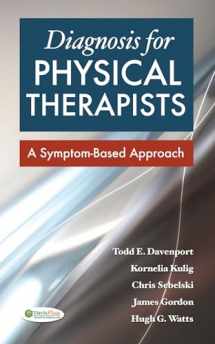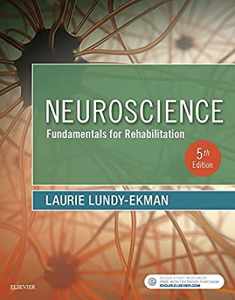
Diagnosis for Physical Therapists: A Symptom-Based Approach
ISBN-13:
9780803615281
ISBN-10:
0803615280
Edition:
First Edition
Author:
Todd E Davenport PT DPT OCS, Kornelia Kulig PT PhD FAPTA, Chris A. Sebelski PT DPT OCS CSCS, James Gordon PT EdD FAPTA
Publication date:
2012
Publisher:
F.A. Davis Company
Format:
Paperback
1312 pages
Category:
Physical Therapy
,
Allied Health Professions
,
Diagnosis
,
Medicine
FREE US shipping
Book details
ISBN-13:
9780803615281
ISBN-10:
0803615280
Edition:
First Edition
Author:
Todd E Davenport PT DPT OCS, Kornelia Kulig PT PhD FAPTA, Chris A. Sebelski PT DPT OCS CSCS, James Gordon PT EdD FAPTA
Publication date:
2012
Publisher:
F.A. Davis Company
Format:
Paperback
1312 pages
Category:
Physical Therapy
,
Allied Health Professions
,
Diagnosis
,
Medicine
Summary
Diagnosis for Physical Therapists: A Symptom-Based Approach (ISBN-13: 9780803615281 and ISBN-10: 0803615280), written by authors
Todd E Davenport PT DPT OCS, Kornelia Kulig PT PhD FAPTA, Chris A. Sebelski PT DPT OCS CSCS, James Gordon PT EdD FAPTA, was published by F.A. Davis Company in 2012.
With an overall rating of 3.8 stars, it's a notable title among other
Physical Therapy
(Allied Health Professions, Diagnosis, Medicine) books. You can easily purchase or rent Diagnosis for Physical Therapists: A Symptom-Based Approach (Paperback) from BooksRun,
along with many other new and used
Physical Therapy
books
and textbooks.
And, if you're looking to sell your copy, our current buyback offer is $7.32.
Description
- Demonstrates how to organize the history and examination interview, and to interpret the findings using a 'process' that helps to determine what is the most likely type and source of the pathology.
- Organizes the content by the presenting primary symptom.
- Uses outlines, lists, and tables within each symptom chapter to make reference easy.
- Follows a standard format throughout each symptom chapter that includes…
- A brief description of the symptom and its variations.
- Red flags indicating the need for special concern
- Tables of possible conditions, organized by how common or rare they are.
- Identifies conditions that might require emergency or urgent attention.
- Describes the differential diagnosis of each symptom, with careful attention to the findings in the history and examination.
- Discusses each of the conditions listed in the table of possible diagnoses, focusing on the key findings that would rule a condition more or less likely.
- Lists tests that might be needed to reach a definitive differential diagnosis.
- Facilitates decision making regarding whether physical therapy is…not indicated, indicated after referral or consultation with another healthcare practitioner, or appropriate without additional referral or consultation.


We would LOVE it if you could help us and other readers by reviewing the book
Book review

Congratulations! We have received your book review.
{user}
{createdAt}
by {truncated_author}




